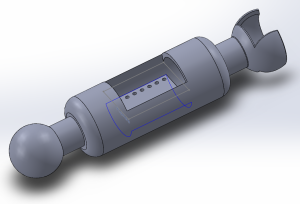Indie game developers are cheap! Yes, cheap! Don’t get me wrong, as someone who is frugal and indie game developer, I am probably the epitomy of a cheap game developer (and I see that as a good thing). Developing Alley Avenger, the only amount of money I spent throughout the project was the $25 license fee to become an Android developer. From what I’ve gathered, many other indie game developers are the same way. Rightly so, the core concept behind being an indie developer is that you’re self-funded.
So naturally, being self-funded, some more expensive tools that are typically chump-change for larger studios tend to be a major expenditure for indie developers. One of these tools obviously being motion detection for animating 3D models.
It’s 2015, how has the market not given us a cheap alternative to motion detection? Having tinkered with Blender, I’ve found the most frustrating part about 3D modeling is animating. In the past, many of my game development projects were stopped dead in their tracks because I’m just stinkin’ not good at animating on a computer. I believe this pain-point rings true for many 3D indie developer/designers (think about the last time you played a game with stiff 3D animations!), but spending $1000+ on a tool just to alleviate this issue just isn’t reasonable.
 So with this issue in mind, I started developing OhSnap!, a tool to cheaply and easily build your models’ armatures with physical pieces and animate it with your hands! So far, these are the rough specs I’ve been working on for this project:
So with this issue in mind, I started developing OhSnap!, a tool to cheaply and easily build your models’ armatures with physical pieces and animate it with your hands! So far, these are the rough specs I’ve been working on for this project:
- 3D printed “bones” will be able to snap together (see picture). Bones will vary in length and number of connectors at either end.
- Each “bone” will have an accelerometer (MPU6050) chip housed inside of them to gather rotational positioning data along with a cable to connect to the central micro-controller.
- The central micro-controller will be comprised of a single Arduino Uno bundling raw data and passing it via USB to the computer.
- To start, the tool will integrate with Python to easily assign and rotate the physical bone-structure with the virtual armature. Possible support for 3DS Max or Maya in the future.
I’ve gotten rather far in development. Check out the partially-finished product below and stay tuned for posts on future development!
